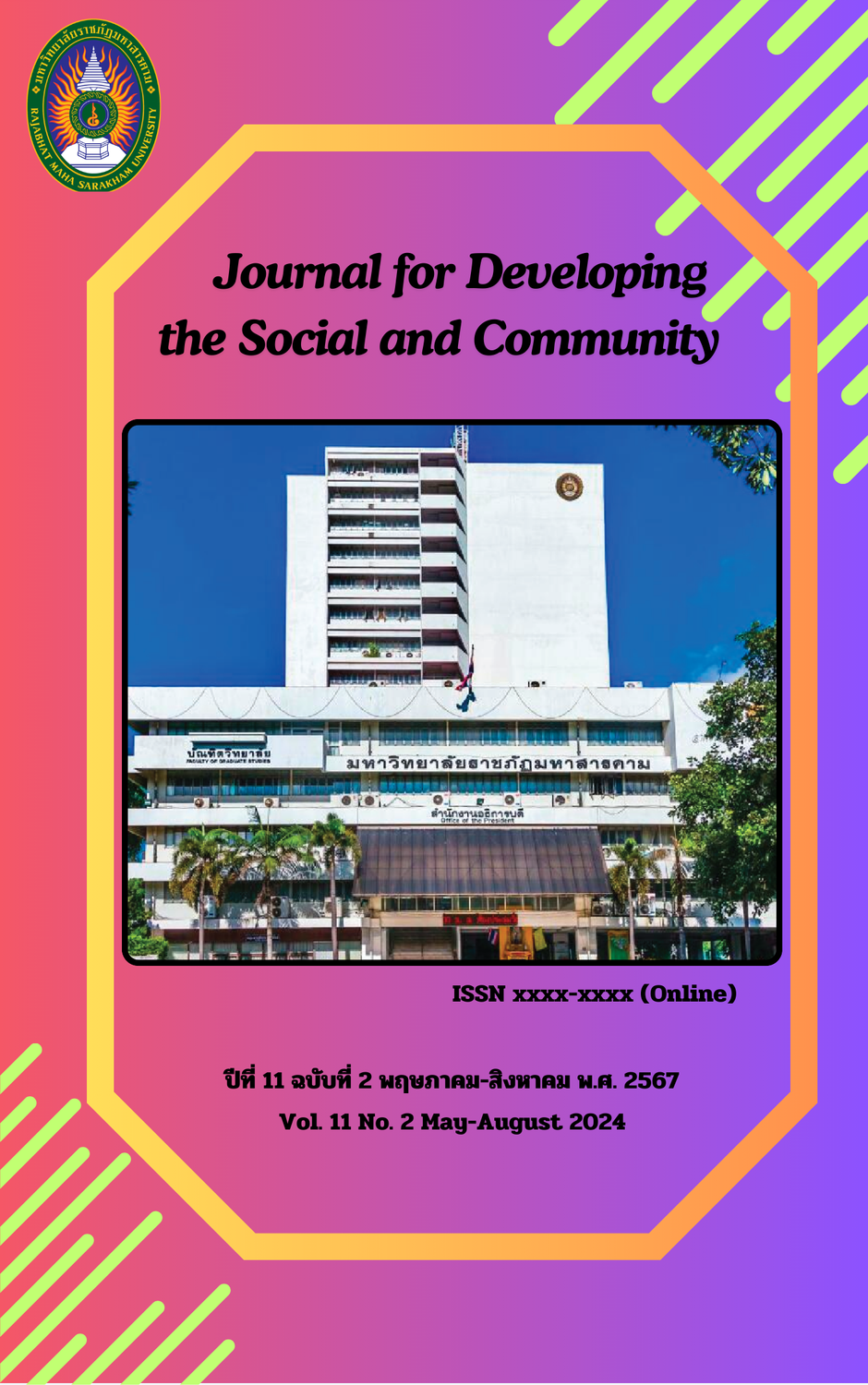Development Guidelines for Visionary Leadership of School Administrators Under the Office of Maha Sarakham Primary Educational Service Area 3
Keywords:
Visionary Leadership, Guidelines for the Development, Educational AdministrationAbstract
The objectives of this research were 1) to study the needs about the current and the desired conditions for Visionary Leadership of School Administrators Under the Office of Maha Sarakham Primary Educational Service Area 3 2) To study the guidelines for the development of Visionary Leadership of School Administrators Under the Office of Maha Sarakham Primary Educational Service Area 3. The research was divided into 2 phases. Phase 1 study the current situation. Visionary Leadership of School Administrators Needs From the sample group, 285 were divided into 40 administrators and 245 teachers. Sampling using a stratified random sampling method. The tool was a questionnaire. The Item Objective Congruence Index (IOC) value 0.80–1.00 The present condition had a confidence value of 0.93, a power of discrimination between 0.38 - 0.75 and a desirable condition had a confidence value of 0.94 and a power of discrimination was between 0.36 - 0.74. The statistics used in the research were frequency, percentage, mean, standard deviation and Priority Needs Index. Phase 2 studied the guidelines for the development of Visionary Leadership of School Administrators using the interview forms, interviewed 7 senior experts and using the descriptive analysis.
The results of the research were as follows: 1) The current Visionary Leadership of School Administrators in schools. Overall and each aspect is at a moderate level. The desirable condition Visionary Leadership for educational administration in schools as a whole and in each aspect was at the highest level. and the study of the priority needs index to develop Visionary Leadership for educational administration in schools in between PNImodified 0.37 - 0.41 and 2) The guidelines for the development of Visionary Leadership for educational administration in schools. Found 39 approaches, divided into Formulating 11 Approaches. Dissemination 9 Approaches. Implementing 10 Approaches. and Role model 9 Approaches. There is an assessment of the suitability and feasibility overall and in each aspect. At the highest level.
References
Chaiyacharoen, T. (2014). The relationship between visionary leadership of administrators and the atmosphere of the school organization for expanding educational opportunities in Khao Chakan District under the Office of the Primary Educational Service Area, Sa Kaeo Area 1. Chonburi: Burapha University.
Chansaeng, S. (2015). Development of a causal relationship model of factors influencing visionary leadership of school administrators under the Office of Secondary Education Area 18. Chanthaburi: Ramkhamhaeng University.
Chiangklang, A. (2019). The relationship between visionary leadership of school administrators and the performance of teachers in schools under the Office of the Primary Education Area 3, Buriram. Buriram: Buriram Rajabhat University.
Hongthong, R. & Udomthap, T. (2016). Visionary leadership in the context of change leadership. Journal of Humanities and Social Sciences Review, 18(2), 73–87.
Khanthaboon, K. (2018). The relationship between visionary leadership of administrators and the effectiveness of educational institutions under the Mahasarakham Educational Service Area Office 2. Journal of Graduate Saket Review., 4(2), 1-10.
Konwai, R. (2022). Visionary leadership of school administrators that affects the performance of teachers in schools under the Office of the Secondary Education Service Area, Mukdahan. Sakon Nakhon: Sakon Nakhon Rajabhat University.
Manmontri, T. (2021). The relationship between visionary leadership of school administrators and teachers' motivation in Mukdahan Primary Educational Service Area Office. Sakon Nakhon: Sakon Nakhon Rajabhat University.
Office of the Basic Education Commission. (2014). Quality Management Manual. Bangkok: Agricultural Cooperative Assembly of Thailand Printing House.
Office of the Basic Education Commission. (2017). National Education Plan 2017 - 2036. Bangkok: Prik Wan Graphic.
Phuchalermtrakul, P. (2018). Visionary leadership of executives affecting the effectiveness of Bang Tei Subdistrict Municipality, Sam Khok District, Pathum Thani Province. Samut Prakan: Suvarnabhumi Institute of Technology.
Prasitratsin, S. (2008). Qualitative research methodology: current problem research and future research. Bangkok: Samlada Partnership.
Sinlarat, P. (2010). Creative and productive leaders: new paradigms and new leaders in education. Bangkok: Chulalongkorn University.
Songwanwongwan, W. (2014). Management and Organizational Behavior (9thed.). Bangkok: Pearson Education Indo China.
Srisa-ard, B. (2017). Preliminary research. (10thed). Bangkok: Suwiriyasan.
Wilmore, E.L. (2002). Principal Leadership: Applying the New Educational Leadership Constituent Council (ELCC) Standards. Thousand Oak, California : Conwin Press.
Yotpanan, S. (2019). Visionary leadership of educational administrators affecting change management in educational institutions under the Office of Secondary Education Area 38. Nonthaburi: Sukhothai Thammathirat Open University.
Downloads
Published
How to Cite
Issue
Section
License
Copyright (c) 2024 Journal for Developing the Social and Community

This work is licensed under a Creative Commons Attribution-NonCommercial-NoDerivatives 4.0 International License.
Articles that are published are copyrighted by the authors of the articles







